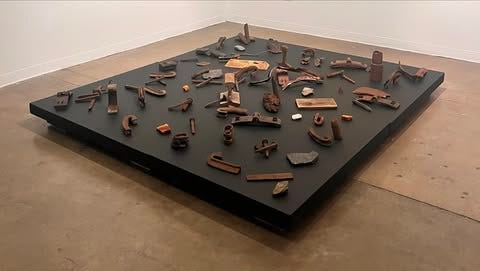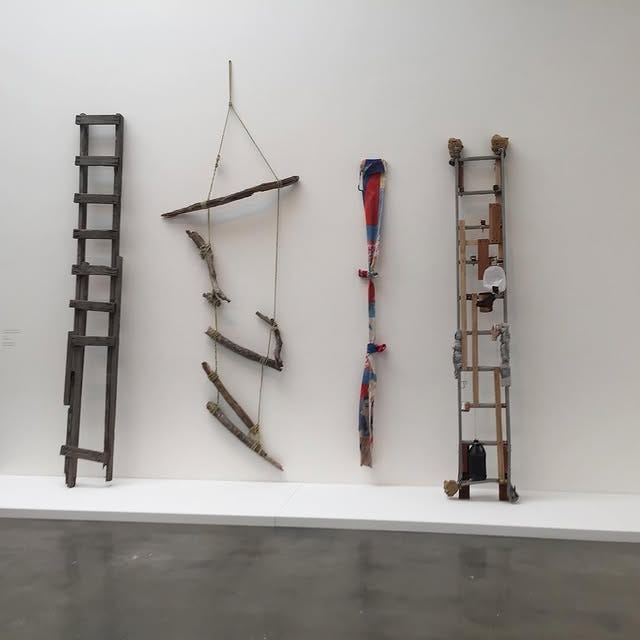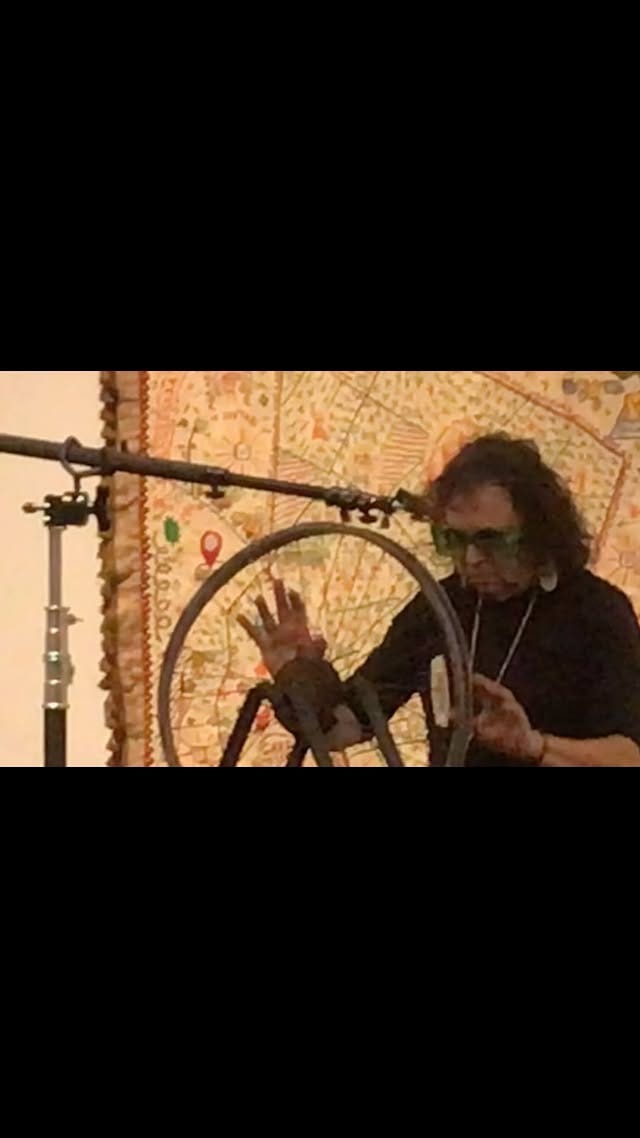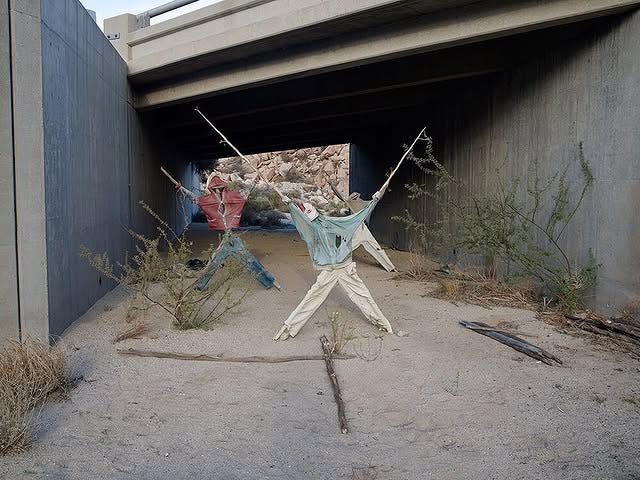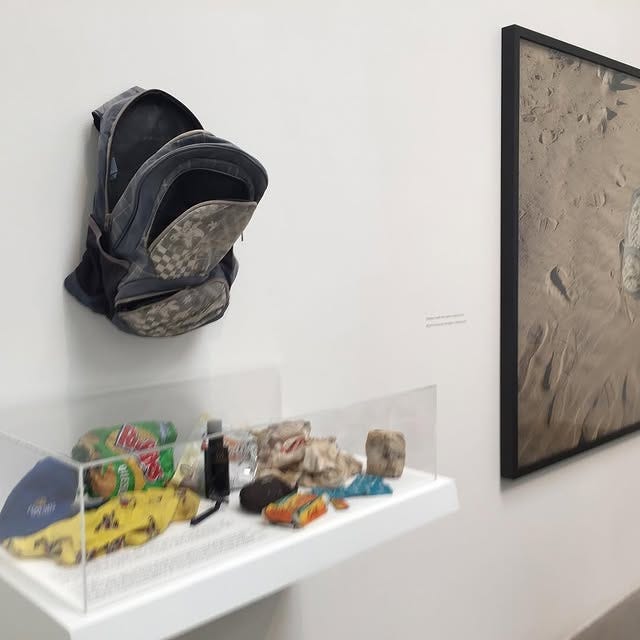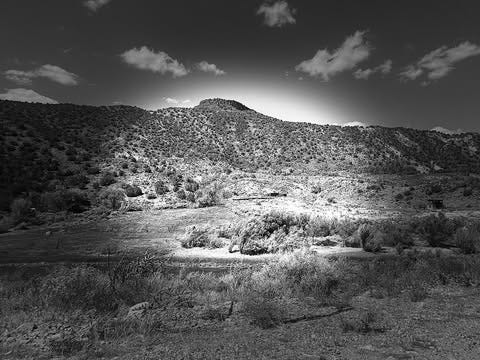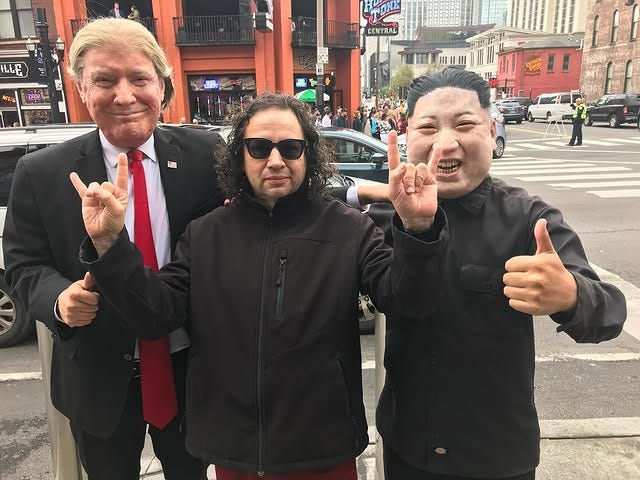Guillermo Galindo convierte los restos de la frontera en instrumentos de memoria viva/ Guillermo Galindo turns border remnants into instruments of living memory
VOICES
Columnista: Yael Hervert | Tampa FL | Junio 2025
Entre la arena, el silencio y el metal oxidado del desierto, el artista y compositor Guillermo Galindo encontró una forma única de hacer que las voces migrantes no se pierdan: transformó los objetos abandonados en la frontera entre México y Estados Unidos en instrumentos musicales.
Galindo no busca hablar por los migrantes, sino crear un espacio donde su ausencia resuene, donde los objetos —una botella rota, una prenda olvidada, un cartucho de bala— cuenten la historia del viaje, del miedo, del deseo de cruzar. Su obra “Border Cantos”, realizada en colaboración con el fotógrafo estadounidense Richard Misrach, es un homenaje sensorial al tránsito humano forzado.
Cuando el arte se encuentra con los vestigios de la esperanza
Border Cantos comenzó cuando Misrach, reconocido por sus fotografías de gran formato en paisajes desolados, compartió con Galindo imágenes de la frontera acompañadas de objetos encontrados durante sus recorridos. Galindo los tomó y les dio nueva vida: los convirtió en instrumentos sonoros experimentales. Cada pieza emite un sonido único, crudo, disonante, profundamente humano.
“Lo que más me interesa es dar voz a los objetos que la gente ha dejado atrás”, ha dicho Galindo.
Su trabajo se aleja del discurso tradicional sobre la migración: no victimiza, no editorializa. Su arte escucha.
Esculturas sonoras, performance y ritual
Las instalaciones de Galindo no se limitan a exhibiciones estáticas. En muchas ocasiones, los instrumentos son activados en conciertos donde el artista interpreta composiciones que evocan el tránsito, el duelo, la resistencia. La frontera se convierte en partitura; el desierto, en escenario.
Estos conciertos han sido presentados en instituciones de prestigio como el San Jose Museum of Art, el Utah Museum of Fine Arts y el Crystal Bridges Museum of American Art.
Una obra que respira contexto
El trabajo de Galindo no puede entenderse sin el contexto político y humano de la migración contemporánea. El proyecto surgió durante un periodo de fuertes tensiones en la política fronteriza de Estados Unidos, cuando la construcción del muro y el discurso antiinmigrante ocupaban titulares.
Sin embargo, Galindo propone otra narrativa: una donde la memoria se preserva no con palabras, sino con sonido. Una narrativa donde la creatividad también es una forma de justicia.
ENGLISH
Amid the sand, silence, and rusted metal of the desert, artist and composer Guillermo Galindo discovered a unique way to ensure that migrant voices are not lost: he transformed the abandoned objects found along the U.S.-Mexico border into musical instruments.
Galindo doesn’t aim to speak for migrants, but rather to create a space where their absence resonates—where objects like a shattered bottle, a forgotten garment, a spent bullet casing tell the story of a journey marked by fear, hope, and the desire to cross. His piece “Border Cantos,” created in collaboration with American photographer Richard Misrach, is a sensory tribute to human displacement.
When art encounters the remnants of hope
Border Cantos began when Misrach—known for his large-format photographs of desolate landscapes—shared with Galindo a series of images and found objects collected during his trips to the border. Galindo took those remnants and gave them new life, crafting them into experimental sound instruments. Each one emits a raw, dissonant, deeply human sound.
“What interests me most is giving voice to the objects that people have left behind,” Galindo has said.
His work steps away from traditional narratives about migration. It doesn’t victimize, nor does it editorialize. His art listens.
Sound sculptures, performance, and ritual
Galindo’s installations go far beyond static displays. In many instances, the instruments are activated in live performances, where he plays compositions that evoke migration, mourning, and resistance. The border becomes a score; the desert, a stage.
These concerts have been showcased in prestigious institutions such as the San Jose Museum of Art, the Utah Museum of Fine Arts, and the Crystal Bridges Museum of American Art.
A work that breathes political and human context
Galindo’s work cannot be fully understood without considering the political and humanitarian crisis surrounding contemporary migration. Border Cantos emerged during a time of intense debate over U.S. border policy, as wall construction and anti-immigrant rhetoric dominated headlines.
Yet Galindo offers a different narrative—one where memory is preserved not through words, but through sound. A narrative where creativity itself becomes a form of justice.



